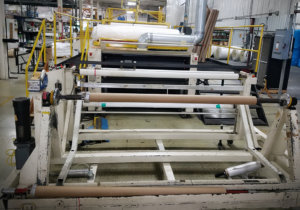The Key to the Coating Rod: Behind the Product

Keep in mind—though a coating rod is just one piece of the “big picture”, when any part is off, the overall product can suffer.
What is a Coating Rod?
First, let’s make sure that we’re all familiar with the basic idea behind a coating rod. We use coatings rods on the most basic level to apply a precise layer of coating onto a substrate. Different types of coating rods serve different types and “degrees” of coating. This means that different rods will supply different results, usually varying in terms of thickness and expanse across the substrate.
What is a Mayer Rod?
While exploring the concept of the coating rod and its properties, you may have come across references to the Mayer Rod (sometimes referred to as meyer rod). A Mayer Rod is among the original rod types—and though it’s technically a wire-wounder metering rod, it’s taken on its newer name in tribute to its inventor, Charles Mayer. Manufacturers create rods of stainless steel. Then, they wrap them in stainless steel wire. We use these rods with coating machines—they apply pigments and other coatings onto different surfaces.
When we utilize Mayer Rods, we initially work a web substrate through a coating machine. A coating roll then picks up the adhesive coating from a pan, and it’s applied to the web. The Mayer Rod comes into play in that it alters the adhesive (“doctoring” it) until it’s at the desired thickness and patter. While you can theoretically apply a coating without a Mayer Rod, it’s much harder to make that coating “correct” without working with a Mayer Rod in this particular process.
One benefit of using a Mayer Rod system as opposed to certain road coating alternatives? The wire we use with a Mayer Rod is actually recyclable. It’s easy for us to strip wire wound rods. Not only does this cut down on waste (something more and more business owners have prioritized in recent years) it also cuts costs over time. Furthermore, wire wound rods like Mayer Rods come with no minimum and no setup charges.
What Number is Mayer Rod?
We do, of course, find variations within Mayer Rods. When considering a Mayer Rod’s number, you may be thinking of the rod’s size. A Mayer Rod typically comes in sizes 3 through 75, though they can also come in half sizes. The size of a Mayer Rod specifically refers to the diameter of the wire in millimeters.
When it comes to more specific types of coating rod numbers, consider the No. 90 rods, which always apply a heavier layer of coating. This makes these rods perfect for glass, metals, and film. This is because these materials are non-porous, which is usually more ideal for thicker layers of coating.
Another coating rod number to keep in mind is the No. 28 rod. While this rod functions similarly to the No. 90 coating rod, it ultimately applies a thinner layer of coating. This makes it more appropriate for paper applications.
How Thick is Rod Coating?
When it comes to the thickness of a rod coating itself, you’ll see some degree of variation. Usually, you’ll see an applied coating range from .25 to 2 millimeters in terms of thickness. Usually, wound or formed rods will work better with a thinner coating. Alternatively, a smoother rod usually requires a thicker coating. Ensuring that the coating thickness corresponds correctly with the individual properties of a rod can ultimately extend a rod’s lifetime.
Why Do We Use Coating Rods?
While there may be alternatives to coating rods available, the main reason why we rely on this process is the consistency it offers. It’s much easier for us to replicate the results of a coating rod, and this means that we can mass-produce more efficiently and quickly.
Several different industries rely on coating rods as a part of their manufacturing procedures. These include:
- Paperboard mills. We use smoothing rods in particular to apply latex, Kaolin clay, and titanium coatings onto single and duplex coating board. Ultimately, this results in the production of cardboard packaging, cereal boxes, and gift boxes.
- Paper mills. Needless to say, paper mills utilize coating rods as well. Paper mills apply coating rods to the front and back of the paper, producing white printer paper, copying paper, brown liner and medium paper, and thermal transfer products (these would typically include labels).
- Converting plants. Think about the plants that make window films, tapes, and protective masking—all of these plants may utilize coating rods.
Now, you understand the importance of coating rods and their intricacies. But what if you need a product coated and processed using the strategies discussed above? Rather than investing in permanent equipment, as well as permanent employees, you may find more success in working with a third-party manufacturing company like CTI.
A third-party manufacturer can walk you through the coating process—and handle it for you. This results in products made consistently and efficiently, without the errors that can come up when you attempt to produce individually.
Call CTI at 419-924-5566 for more information, or contact us here. Let’s see if we can get the process started for you.
- << < Previous Post
- 1
- 2
- ...
- 83
- ...
- 281
- 282 Next Post > >>

